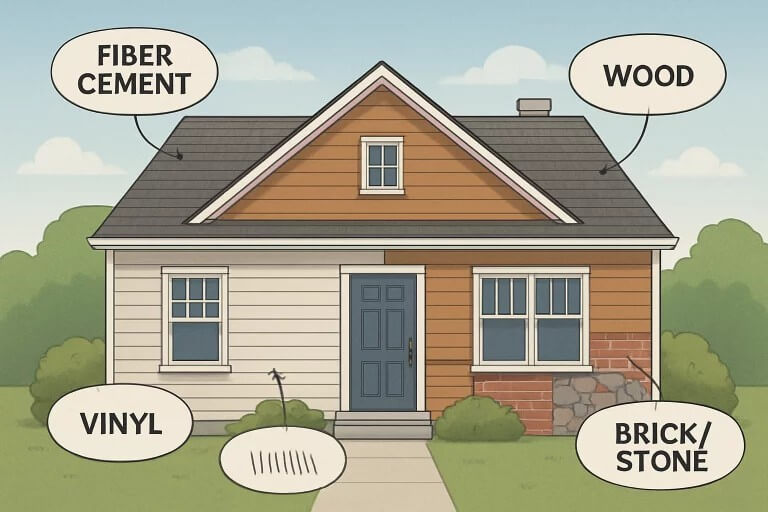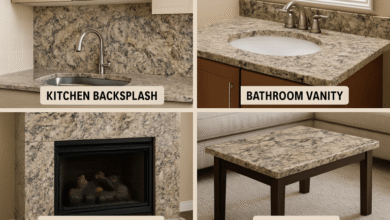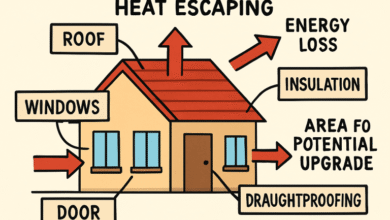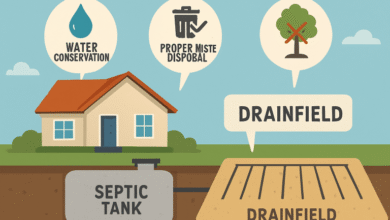How to Choose Siding Materials for Long-Lasting Home Protection

Choosing the right siding material is a vital decision for any homeowner, as it not only safeguards your residence against harsh weather conditions but also defines the overall look and feel of your property. Siding acts as your home’s first line of defense against wind, rain, sun, and pests, ensuring your investment stays protected and maintains its curb appeal over the years.
With a broad range of options available today, understanding the nuances between materials—such as their durability, maintenance requirements, and visual styles—is key to making an informed choice.
For those who want added peace of mind and professional assistance, partnering with experienced providers of siding repair Denver ensures your siding delivers reliable performance and longevity through expert care and prompt repairs.
Careful consideration of your local climate, personal aesthetic preferences, and your willingness or ability to maintain your siding will directly affect the long-term ROI and satisfaction with your choice. Each type of siding offers unique benefits and trade-offs that can significantly impact your home’s protection and upkeep needs. Selecting wisely means not just elevating your home’s exterior beauty but also securing enduring defense with minimal interruptions, so your siding remains as functional as it is attractive.
Table of Contents
Fiber Cement Siding
Fiber cement siding, created from a blend of cement, sand, and cellulose fibers, has grown in popularity as a versatile, modern cladding material. Designed to convincingly mimic natural wood or classic stucco, it boasts a sophisticated appearance while delivering exceptional resistance to fire, termites, and rot.
This durability makes it an excellent solution for homeowners who want both style and protection but wish to avoid the vulnerabilities of more traditional materials. Although fiber cement siding does not require constant vigilance, it’s wise to repaint it every 10–15 years to retain its fresh, vibrant appearance and protect the board from moisture.
The installation process can be labor-intensive and costlier than with lighter materials, as the panels are heavy and require specialized tools and training. Nevertheless, the material’s robust longevity and minimal susceptibility to common issues make it a smart long-term investment.
Vinyl Siding
Vinyl siding is cherished by homeowners for its cost-effectiveness, versatility, and vast array of color and texture options. Engineered from polyvinyl chloride (PVC), this siding resists moisture, fungal growth, and pest infiltration, making it highly adaptable to a wide variety of climates.
Modern manufacturing techniques give vinyl siding the ability to replicate the look of painted or stained wood, offering decorative flexibility in both classic and modern designs.
Maintenance is easy—usually just an occasional rinse with a garden hose keeps it looking sharp. However, over time, extreme weather can cause vinyl to crack or become brittle, especially in frigid conditions, while exposure to intense sunlight can result in fading or warping.
For those desiring enhanced thermal performance, insulated vinyl siding adds a layer of foam backing, enhancing energy efficiency and comfort while slightly raising the price point. Vinyl’s combination of low upfront cost and maintenance requirements makes it a practical solution for many homeowners.
Wood Siding
Nothing compares to the warm, timeless appeal of natural wood siding for those looking to impart authentic charm and elevate classic curb appeal. Available in species such as cedar and redwood—both celebrated for their resistance to decay and insect damage—wood siding can be installed in a variety of patterns, from lap and shingle to board-and-batten.
The unique grain and colors of each plank lend every exterior a distinct, character-filled appearance that synthetic materials rarely match. However, with beauty comes the obligation of regular care: to counteract the effects of moisture, sun, and changing temperatures, wood siding must be periodically painted, stained, or sealed.
Neglecting this essential routine can lead to rot, cupping, splitting, or even infestations, dramatically shortening the lifespan of your siding. For many, the high-maintenance commitment is outweighed by the increase in property value and the classic, inviting aesthetic only genuine wood can offer.
Metal Siding
Metal siding, constructed from aluminum or steel, delivers unmatched durability and strength, making it one of the most formidable options for home exteriors. Aluminum siding is celebrated for its lightweight nature and its immunity to rust and corrosion, which is particularly beneficial in humid or salty coastal environments where other materials may falter.
Steel siding, while generally heavier, can withstand significant impacts and offers superior defense against hail, flying debris, or storms. Today’s metal siding can be coated to look like wood or come in a host of modern styles and colors to adapt to any architectural vision.
Maintenance is generally simple—just periodic cleaning—but aluminum can be prone to denting from hard impacts, while steel may be vulnerable to rust if its painted or treated coating gets damaged. Though its upfront costs may be higher compared to vinyl, the long-lasting value, fire resistance, and minimal requirements for repair make metal siding a wise enhancement for enduring home protection.
Brick and Stone Veneer
Brick and stone veneer are the premier choices for homeowners seeking a rich, elegant exterior paired with unparalleled durability. These materials exude timeless sophistication and can elevate any property with a sense of permanence and grandeur.
Both brick and stone veneer possess natural resistance to fire, pests, and weather extremes, requiring only minimal ongoing care to retain their pristine appearance. They often outlast other siding options by decades or even generations, justifying their higher initial installation cost.
Because of their weight, a stable and properly engineered structural base is crucial, and the installation must be performed by experienced tradespeople. Despite the investment, the virtual absence of maintenance, extraordinary resilience, and classic appeal ensure that brick and stone veneer offer substantial long-term return and enduring curb appeal.
Climate Considerations
One of the most important factors in choosing siding is the local climate your home faces year-round. Humid, rainy, or coastal regions require siding that can resist moisture and prevent rot or corrosion—fiber cement and metal are excellent candidates for these settings.
Areas with extreme temperatures, from blazing summer heat to biting winter cold, need materials that don’t warp, crack, or degrade quickly; vinyl and fiber cement are popular there, provided you account for sun or freeze-thaw exposure. For wooded or wildfire-prone locales, opt for non-combustible options like metal or fiber cement, which provide vital protection and may even reduce insurance premiums.
Wood thrives in milder climates but must be meticulously maintained in places with significant shifts in weather or pest populations. Always evaluate local environmental concerns and match your siding choice to your region’s challenges, ensuring your home remains safe, stable, and attractive for many years.
Maintenance and Installation
Longevity and performance of any siding choice rely heavily on expert installation and attentive, ongoing maintenance. Improper installation can introduce weak points that invite moisture intrusion, mold growth, or energy loss through gaps and poorly sealed edges.
It’s wise to consult with professionals who specialize in installation, regular siding inspection, and repair. Different materials demand different care routines—vinyl and metal generally just need periodic cleaning with water, while wood requires resealing, repainting, or staining every few years.
Fiber cement falls somewhere in the middle, needing only occasional repainting. For additional guidance and handy tips, the HomeTips’ Siding Repair Guide offers in-depth instructions for homeowners keen to prolong the life and appearance of their exteriors. Proper installation paired with diligent upkeep is the best strategy for protecting your home and maximizing your siding investment over time.
Ultimately, selecting siding is about more than just enhancing your home’s outward style—it is a crucial step in making a wise, future-proof investment for your property’s strength and value.
By thoughtfully comparing the pros and cons of each material, aligning your choice with your climate and lifestyle, and committing to regular inspection and maintenance, you can confidently choose siding that will protect, beautify, and add value to your home for many years ahead.
See also: Smart Social Media Strategies: Practical Tactics for Growing Your Online Presence



